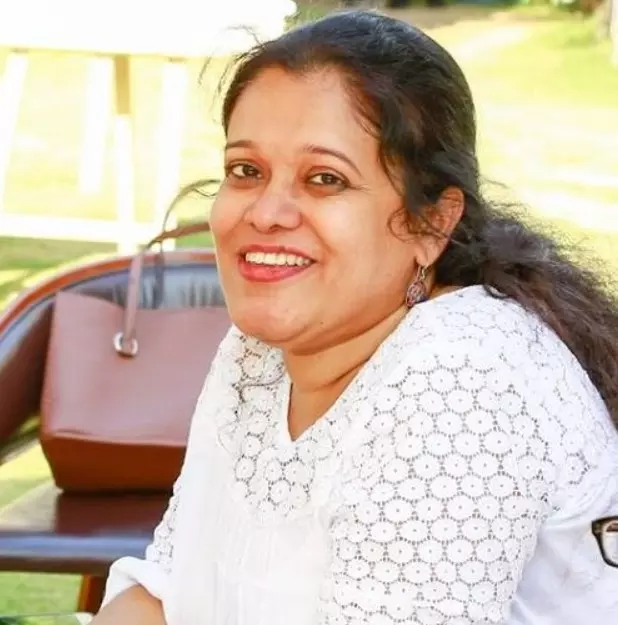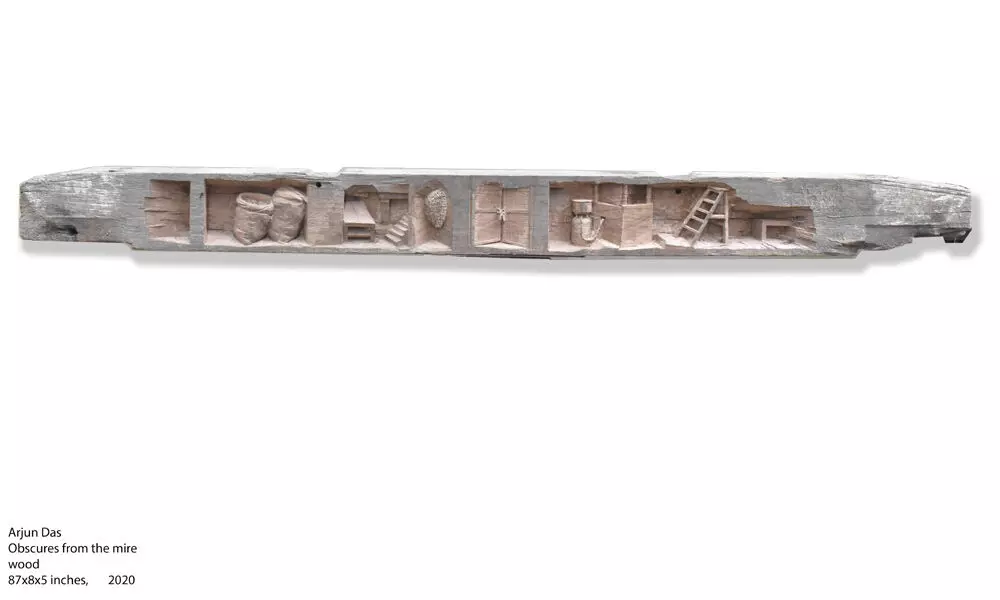Metaphor: The Magic It Holds

Metaphor: The Magic It Holds
Art, whether it's realistic or not, takes its reference from life
Art, whether it's realistic or not, takes its reference from life. And it is life that has provided the subject for the sculptures in wood, a common medium used to represent different thought and approach by three young artists for an art show 'Metaphor: The Magic It Holds' organised by DHI Art Gallery, Hyderabad.
Ajith A S is a nomad artist who travels to places and works there for a period of time. He graduated from College of Fine Arts Trivandrum, Kerala University in 2016 and received his Master's Degree from S. N. School of Arts and Communication, University of Hyderabad (2018), He has exhibited works in some of the major galleries in Kerala since his college days. His works are in the private collections in Austria and Denmark.
Subhankar Bag studied Sculpture in Rabindra Bharati University, Kolkata. In 2018, he completed Master's programme. He has been part of several group exhibitions, workshops and art camps including the recent one on wood carving in Tirupati. Subhankar has received awards from the Govt. of West Bengal.
The participating artists create visual metaphors, each attributing his own creative vocabulary to his piece of work which is unique, yet the story of man, his relation with things around him; the non-living objects that gain a life of their own and even significance in the materialistic way of living, and make their way into art, interestingly, though not necessarily, creates a common ground.
Arjun Das' realistic representation of objects from his immediate surroundings provides a glimpse into the lives of the migrant labourers of Bengal. The old woodblock he carves carries the traces of time in its body. Another layer of time and memory is further added as the day-to-day objects are carved in wood and moments get frozen in the solidity of the material. While Arjun is keen on representing reality, Subhankar, on the other hand, is in a constant attempt to negate the real objects that he dwells with in his studio. Redesigning the furniture and tool and disabling their functionality allows him to create his own visual vocabulary. Standing apart from the rest, Ajith's endeavours completely defy to endure for a long time. They are made to release certain impulses and then left in the same place only after getting clicked by the artist. Same visual motifs appear and reappear in his works in different forms and materials.
Ajith A says, "I prefer working with the objects and materials I chance upon and what, at first glance, catch my attention. Creating a new form with these found objects eventually bestows them with a new meaning and metaphor. My political view has an effective impact on my practice and it controls over my selection of objects and reshaping them."
He adds, "My experience of working in a small dhaba (restaurant) gave me an opportunity to closely examine the behavior and sociology of a section of the migrated community of poor labourer. Objects ranging from spaces like the kitchen, washroom, market, private room architectural spaces etc. are like disparate data, irreconcilable in nature, yet put together, forming an irrational juxtaposition. The whole idea lies in the act of experiencing a shift of the considered objects from the ordinary context to the sculptural/ artistic periphery."
"In conceiving a sculptural form, as part of a cultivated practice there has been an attempt to simultaneously indicate and negate the source of reference. An engagement with the sculpture studio as a space of my functioning leads me to deal with the tools at a sculpture studio. In simultaneously contemplating the form of the tools and negating the same to bring about an artistic ambiguity, I altered the surface, scale and even at times their projection."
























